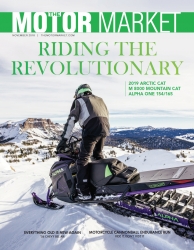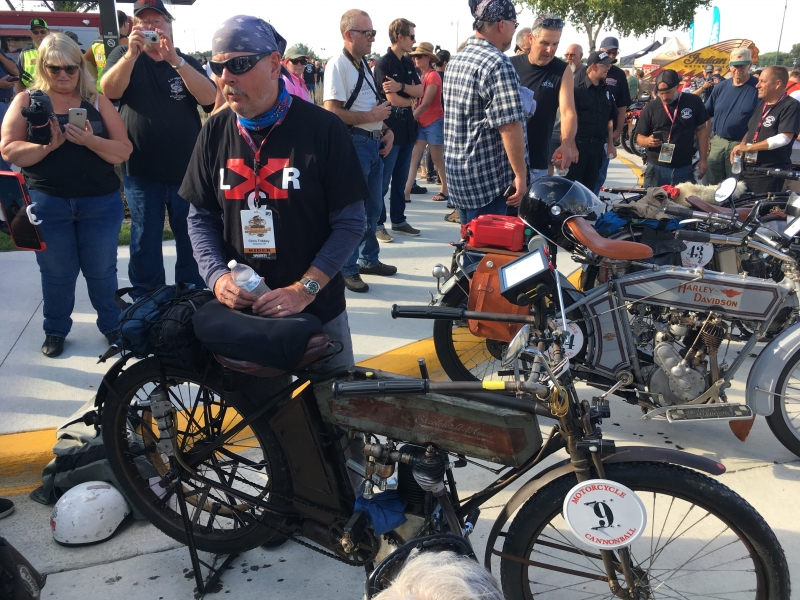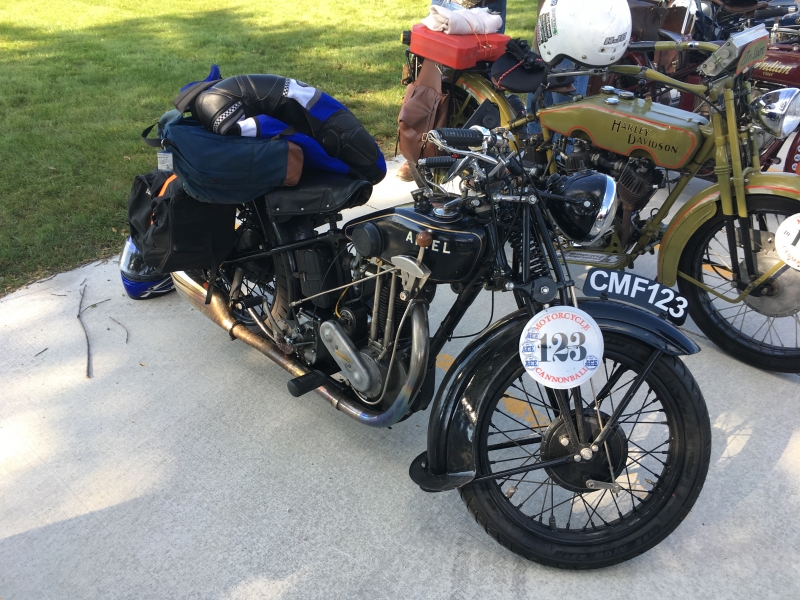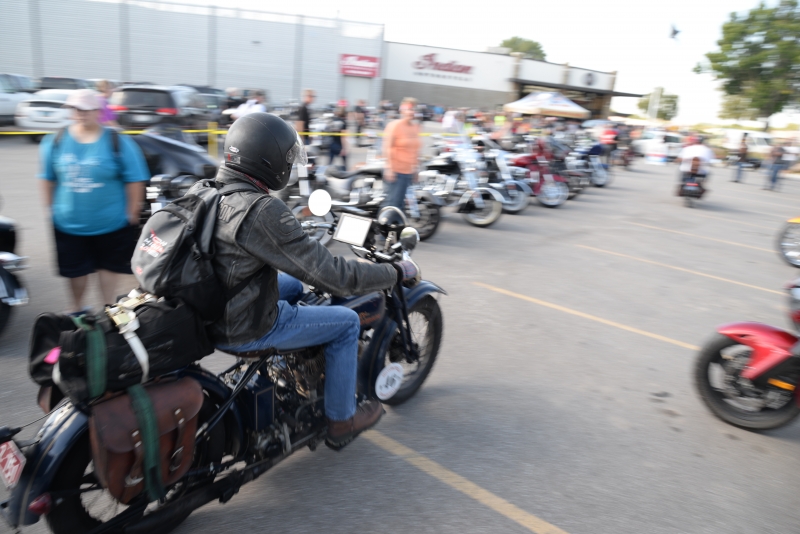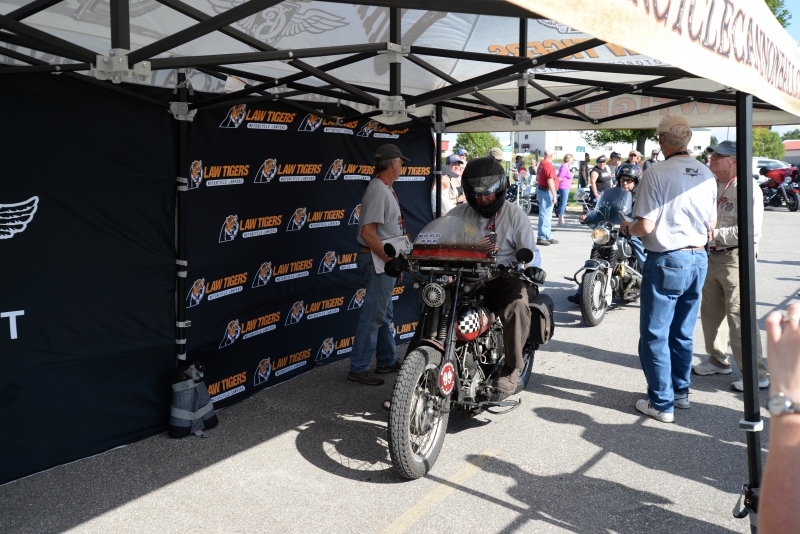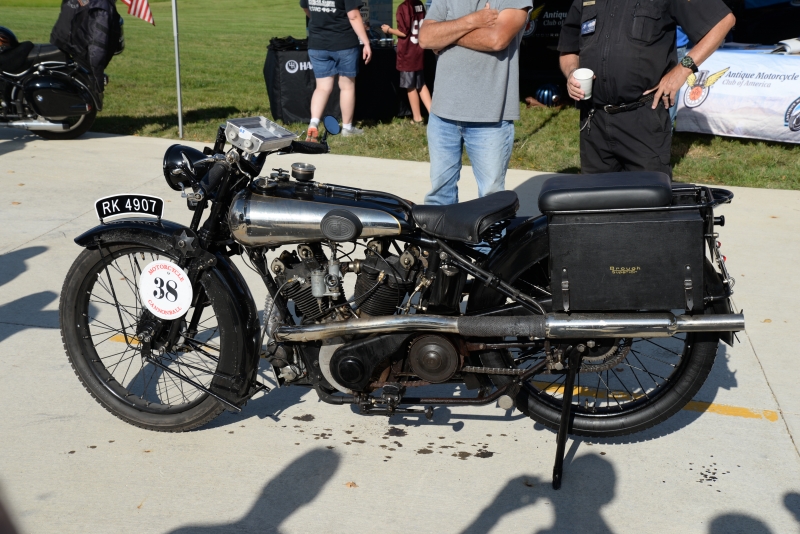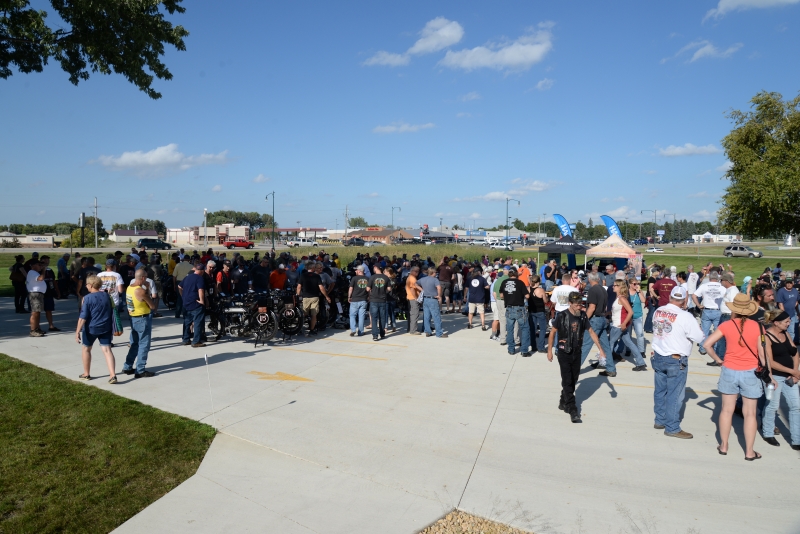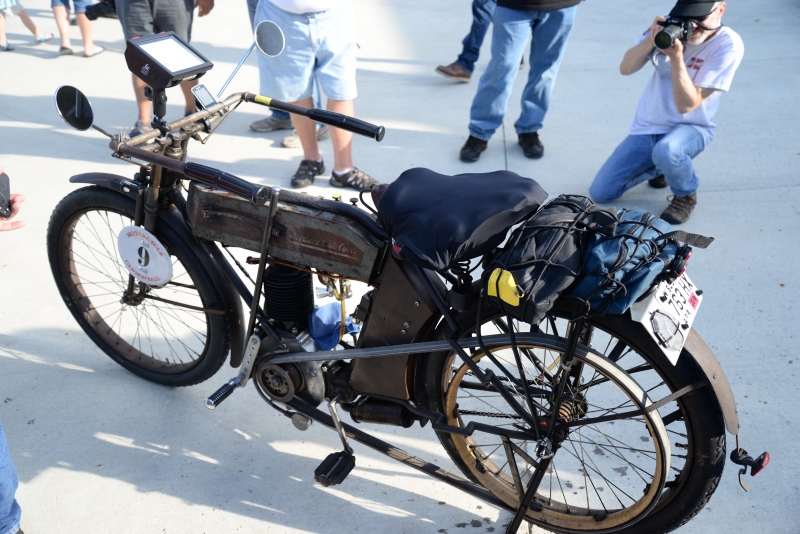More Issues
- August 2023
- September 2021
- August 2021
- July 2021
- June 2021
- May 2021
- April 2021
- March 2021
- February 2021
- January 2021
- December 2020
- November 2020
- October 2020
- September 2020
- August 2020
- July 2020
- May 2020
- April 2020
- March 2020
- February 2020
- January 2020
- December 2019
- November 2019
- October 2019
- September 2019
- August 2019
- July 2019
- June 2019
- May 2019
- April 2019
- March 2019
- February 2019
- January 2019
- December 2018
- October 2018
- September 2018
- August 2018
- July 2018
- June 2018
- May 2018
- April 2018
- March 2018
- February 2018
- January 2018
Motorcycle Cannonball Endurance Run
Written By: Chad Gillen
Photos Courtesy Of: Jeff “the Colonel” Gillen
A grimy, oil-covered motorcyclist pulls into your driveway, causing one hell of a racket and leaking oil everywhere. Usually, the last thing you’d do is give the guy a round of applause. However, that’s exactly what happened on September 14 in Spirit Lake, Iowa, when 107 of these riders were welcomed with cheers by hundreds of other motorcyclists.
These riders were competing in the 2018 Motorcycle Cannonball Endurance Run from Portland, Maine to Portland, Oregon. The 3,400-mile motorcycle endurance run consists of motorcycles that must be manufactured prior to 1929. The motorcycles are very limited in modifications and it pits rider vs. machine on two-lane roads with strict routes and time schedules through 15 stages. The idea was sprouted by Lonnie Isam Jr. in 2009 and the first run took place in September of 2010. Isam wanted old vintage bikes to be ridden and not hidden away. He named the run after the long-distance rider pioneer, Erwin “Cannonball” Baker. In 2010, only 45 riders took part in the run with Isam. It grew to 77 in 2012, and 101 in 2014. Sadly, Lonnie Isam succumbed to cancer in 2017, but the Motorcycle Cannonball Endurance Run lives on.
According to motorcyclecannonball.com, the riders would start arriving at 4 PM and the bikes would be on display until 6 PM. My plan was to meet the Sioux City BMW riders and Sioux Falls BMW riders there. My brother Jeff, AKA “Foot Down” rode his HD and I rode my wife’s new Kawasaki to help her break in the engine. We got there early enough to get good parking and something to eat before the Cannonballers started arriving at 4 PM. When we left the parking lot, it was stuffed full of spectator bikes with a lot of them being really interesting rides in and of themselves. At events like these you get to meet and converse with people you’ve never met before, but everyone seems like old buddies.
I’ve seen a lot of pre-1929 bikes before but I’ve never really seen one running down the road in person. I was surprised by the extremely loud exposed valve train on some of the bikes, usually old Harley-Davidsons, while the Hendersons were pretty quiet. The amount of oil shed by some of these old bikes on the parking lot was enough to tar a roof. One rider was wearing brown canvas riding gear that was completely oil stained on the areas that were anywhere near the motorcycle like the insides of his legs, arms and front beltline. Some bikes were meticulously restored to original condition and some were kept in their original patina. Of course there were Harley-Davidsons and Indians, but there were also Hendersons, Excelsiors, BMWs, Nortons, Triumphs, Brough Superiors, a Thor, a NeraCar, and an Ariel. Sidecars were present too, with one being made out of wicker. (Pray to God that nobody throws a cigarette butt into that!)
This stop was the end of Stage 7 which ran from the National Motorcycle Museum in Anamosa, Iowa to the Indian Motorcycle Factory in Spirit Lake. At the end of this stage, 82 of the original 107 riders were still in the game. I remember seeing one rider come into the lot at about 5:54 PM, get off his bike, sit on the curb and put his head in his hands in defeat. I then found out from another spectator that the time cut off was at 5:45 PM, not 6 PM, and he was now out of the run. I felt my heart slump down with him.
One might be tempted to think that 3,400 miles across the USA over two weeks might not be so bad. But you have to remember how different these period correct original motorcycles are compared to today’s rides. For instance, the only suspension may be a spring under the seat. The throttle may be on the left hand grip. Most likely there is a foot clutch and hand shifter, or a manual spark advance that you have to increase when you roll on the throttle. Not to mention minimalist brakes, lackluster electrical systems, and pencil thin tires. There may be no protection from the weather except your riding gear. How about a motorcycle with no transmission and a direct drive leather belt that you have to adjust constantly with a lever for engagement? Then there are no maps or GPS, just detailed course instructions to find your way. Doesn’t sound the least bit easy now, does it?
This year’s top three finishers were: 3rd Place, Andrea Labarbara on a 1913 Henderson (#98); 2nd Place, Fred Wacker on a 1913 Indian twin (#118); and 1st Place, Dean Bordigioni on a 1913 Harley-Davidson (#13). The Motorcycle Cannonball Run takes place every two years, so make sure to look for it in 2020. It has passed through our area before and I’m sure it will again. And if it comes near you, ride out to meet the riders and cheer them on during their brave and courageous journey. They deserve a round of applause for choosing to run these old motorcycles rather than store them in a museum.
